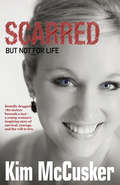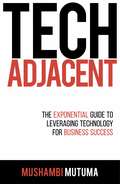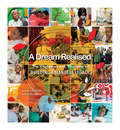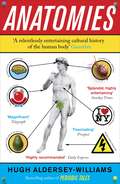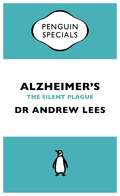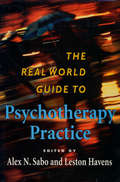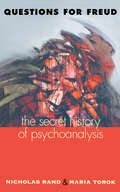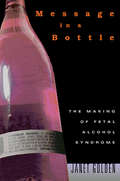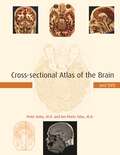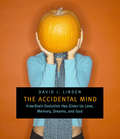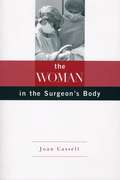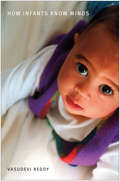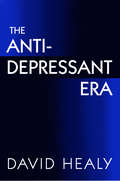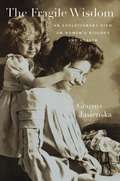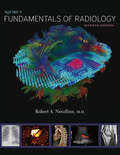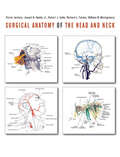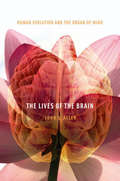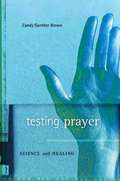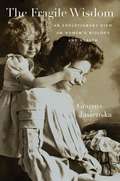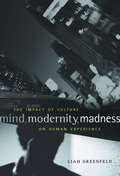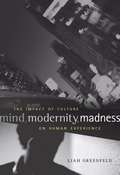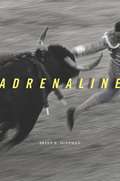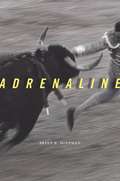- Table View
- List View
Scarred: But Not For Life
by Kim McCuskerBrutally dragged 780 metres beneath a taxi, a young woman’s inspiring story of survival, courage, and the will to live. 13 September 2011. The story would shock thousands and be remembered by many for years to come. It would be plastered all over the papers and continue to attract interest well after the shock factor of what happened had passed. Reports and articles would be written, and “facts”, as given to reporters by some of those involved and willing to be interviewed, would be recounted and repeated in all forms of public media over the months and even years that followed. And although these versions would generate widespread outrage, none was entirely accurate. The stories were about me. I was there. I am Kim McCusker, “the girl who was dragged by a taxi”. This, as I experienced it, is the true version of events.
Tech Adjacent: The Exponential Guide to Leveraging Technology for Business Success
by Mushambi MutumaIt is almost impossible to keep up with the pace and direction in which business and technology are moving today.ARTIFICIAL INTELLIGENCE. AUTOMATION. BLOCKCHAIN. BIG DATA. INTERNET OF THINGS. THE FOURTH INDUSTRIAL REVOLUTION.Who actually knows what any of these concepts mean for their business, much less how to integrate them? Things are moving at a faster pace than ever before and trying to keep up has become intimidating and overwhelming. It’s tempting to bury your head in the sand than try to make head or tail of it all.But none of the buzzwords actually matter! You don’t have to jump aboard every single change and adjustment in the market, or trade in your suit for a T-shirt, jeans and sneaker combo. If you have the right context, it’s a lot simpler to understand and use technological shifts as an opportunity to transform your business.Tech Adjacent is about understanding the principles of tech and its pace, hearing the footsteps of where it might be going, knowing how disruption and innovation work tangibly and, most importantly, leveraging it for your individual exponential success.Innovation is contextual, so while Uber, Airbnb and Facebook are grandiose Silicon Valley success stories, they have little relevance in the African market. This book shares stories and case studies of African businesses, exposing who is getting disrupted as we speak and why, as well as how new companies are leading the next wave of growth.Mushambi Mutuma’s experience and expertise in both business and as a tech entrepreneur give real-life context to rapid change, unlocking future opportunities and offering tools to predict where your audience and industry are heading. He sells no big ideas, but genuinely shares his unique perspectives and know-how to help whoever he can in the process.Tech Adjacent isn’t just another book on growing your business in 100 days, nor is it dry academic theory. It is the guidebook for not only surviving but excelling in a world of exponential growth. Whether you are a start-up entrepreneur or a corporate executive, this guide is a must for both present and future leaders.Don’t get left behind!
A Dream Realised: The Challenges and Triumphs of Building a Mandela Legacy
by Ulrike Hill Zanele Chakela‘How can there be only one dedicated hospital in the country for our children?’ When Madiba asked this question, he sowed the seeds of a challenge that would grow into a legacy.A seed may be small but its size is disproportionate to what it can become over time. The Nelson Mandela Children’s Hospital was a project that seemed impossible when it was just an idea that started with ten people seated around a dinner table. As they discussed the state of healthcare in the country and shared their experiences, they realised that it was the children of Southern Africa who were the most disadvantaged by the lack of dedicated paediatric facilities. At the end of the evening a statement by the late Dr Nthato Motlana took hold and became the catalyst for a remarkable journey: ‘I will speak to Nelson,’ he said.With South Africa’s first democratically elected president Nelson Mandela’s backing, the board of the Children’s Fund was inspired to take up the challenge to address this vital need. After years of global research and advice from experts in numerous different fields a Trust was formed to oversee the project and, critically, to set about raising the one billion rand it would take to build, equip and staff a state-of-the-art children’s hospital.The stories behind the planning for, fundraising and building of the Nelson Mandela Children’s Hospital are inspiring, personal, and sometimes heart-breaking. It was a long and arduous journey, beset with difficulties, but the dedicated team’s commitment and courage prevailed to create a living legacy that will truly impact the lives of children for generations to come.Today, the Nelson Mandela Children’s Hospital in Johannesburg is a proud testimony to a uniquely African story which honours the memory of a great statesman and celebrates the children for whom he cared so deeply.
Anatomies: The Human Body, Its Parts and The Stories They Tell
by Hugh Aldersey-WilliamsThe Sunday Times Science Book of the Year, Anatomies by Hugh Aldersey-Williams, author of bestseller Periodic Tales, is a splendidly entertaining journey through the art, science, literature and history of the human body.'Magnificent, inspired. He writes like a latter-day Montaigne. Stimulating scientific hypotheses, bold philosophic theories, illuminating quotations and curious facts. I recommend it to all' Telegraph *****'Splendid, highly entertaining, chock-full of insights ... It inserts fascinating scientific snippets and anecdotes about our organs into the wider history of our changing understanding of our bodies' Sunday Times'A relentlessly entertaining cultural history of the human body ... brims with fascinating details, infectious enthusiasm ... the terrain he covers is so richly brought to life' Guardian'Elegant and informative ... For Aldersey-Williams, [the body] is a thing of wonder and a repository of fascinating facts' Mail on Sunday ****In Anatomies, bestselling author Hugh Aldersey-Williams investigates that marvellous, mysterious form: the human body. Providing a treasure trove of surprising facts, remarkable stories and startling information drawn from across history, science, art and literature - from finger-prints to angel physiology, from Isaac Newton's death-mask to the afterlife of Einstein's brain - he explores our relationship with our bodies and investigates our changing attitudes to the extraordinary physical shell we inhabit.'More than a science book - it's also history, biography and autobiography - Anatomies is writing at its most refined, regardless of genre' Sunday TimesPraise for Periodic Tales:'Science writing at its best ... fascinating and beautiful ... if only chemistry had been like this at school ... to meander through the periodic table with him ... is like going round a zoo with Gerald Durrell ... a rich compilation of delicious tales, but it offers greater rewards, too' Matt Ridley'Immensely engaging and continually makes one sit up in surprise' Sunday Times'Splendid ... enjoyable and polished' Observer'Full of good stories and he knows how to tell them well ... an agreeable jumble of anecdote, reflection and information' Sunday Telegraph'Great fun to read and an endless fund of unlikely and improbable anecdotes ... sharp and often witty' Financial TimesHugh Aldersey-Williams studied natural sciences at Cambridge. He is the author of several books exploring science, design and architecture and has curated exhibitions at the Victoria and Albert Museum and the Wellcome Collection. His previous book Periodic Tales: The Curious Lives of the Elements was a Sunday Times bestseller and has been published in many languages around the world. He lives in Norfolk with his wife and son.
Alzheimer's: An Essential Guide to the Disease and Other Forms of Dementia (Penguin Specials)
by Andrew LeesBritain like the rest of the developed world is in the grip of a silent plague. Its thousands of victims can no longer make sense of the world and are contained for their own safety in fading Victorian piles and nondescript redbrick detention centres around the country. For them the present is a foreign country and the past a lost continent.There are now more people in the UK with Alzheimer's than the population of Liverpool, and four million Americans are reported to have the disease. Longevity is a major factor in the increasing incidence of the disease, with the number of over 65s in the UK having trebled in the last 100 years, and forecast to double again in the next 25 years.With such an alarming background, the race to find the causes - and therefore potentially a cure - for Alzheimer's is urgent. In this Penguin Special, Dr Andrew Lees, a world expert on the neurodegenerative diseases, explains what we know, and don't know, about Alzheimer's and its amelioration. The drugs that are currently available do not do enough to help, and the various physical and mental exercises we are encouraged to undertake are unproven. Yet it's not entirely a black picture: scientific endeavour has greatly increased our knowledge of the disease's spread and rate of deterioration, and the composition of the starchy plaques and the mechanism of the bindweed tangles in the brain which are core to the illness are much better understood.Alzheimer's is tough even to contemplate. But it represents one of the greatest medical mysteries of our age, and Andrew Lees's book provides a fascinating account of our knowledge of this terrible disease to this point.
The Real World Guide To Psychotherapy Practice.pdf
by Alex N. Sabo Leston HavensManaged care has radically reshaped health care in the United States, and private long-term psychotherapy is increasingly a thing of the past. The corporization of mental health care often puts therapists in professional quandries. How can they do the therapeutic work they were trained to do with clients whom they may barely know, whose care is intruded upon by managed care adminstrators? With unrelenting pressure to substitute medications for therapy and standardized behaviour protocols for individualized approaches, what becomes of the therapist-client relationship?;Unflinchingly honest, "The Real World Guide to Psychotherapy Practice" offers both compelling stories and practical advice on maintaining one's therapeutic integrity in the managed care era. Resisting a one-size-fits-all approach, the authors focus on the principles of forming relationships with patients, and especially patients likely to be under-served (eg. the uninsured poor) or difficult to treat. "The Real World Guide to Psychotherapy Practice" gives voice to therapists' frustrations with the administrative constraints under which they work. But it accepts and offers guidance and inspiration to committed therapists everywhere.
Questions for Freud: The Secret History of Psychoanalysis
by Nicholas Rand Mária TörökWith all the intrigue and twists of a mystery, Questions for Freud uncovers the paradoxes that riddle psychoanalysis today and traces them to Freud's vacillation at key points in his work--and from there to a traumatic event in Freud's life. What role did censored family history play in shaping Freud's psychological inquiries, promoting and impeding them by turns? With this question in mind, Nicholas Rand and Maria Torok develop a new biographical and conceptual approach to psychoanalysis, one that outlines Freud's contradictory theories of mental functioning against the backdrop of his permanent lack of insight into crucial and traumatic aspects of his immediate family's life. Taking us through previously unpublished documents and Freud's dreams, his clinical work and institutional organization, the authors show how a shameful event in 1865 that shook Freud and his family can help explain the internal clashes that later beset his work--on the origins of neurosis, reality, trauma, fantasy, sexual repression, the psychoanalytic study of literature, and dream interpretation. Steeped in the history, theory, and practice of psychoanalysis, this book offers a guide to the wary, a way of understanding the flaws and contradictions of Freud's thought without losing sight of its significance. This book will alter the terms of the current debate about the standing of psychoanalysis and Freud.
Message in a Bottle: The Making of Fetal Alcohol Syndrome
by Janet GoldenA generation has passed since a physician first noticed that women who drank heavily while pregnant gave birth to underweight infants with disturbing tell-tale characteristics. Women whose own mothers enjoyed martinis while pregnant now lost sleep over a bowl of rum raisin ice cream. In Message in a Bottle, Janet Golden charts the course of Fetal Alcohol Syndrome (FAS) through the courts, media, medical establishment, and public imagination. Long considered harmless during pregnancy (doctors even administered it intravenously during labor), alcohol, when consumed by pregnant women, increasingly appeared to be a potent teratogen and a pressing public health concern. Some clinicians recommended that women simply moderate alcohol consumption; others, however, claimed that there was no demonstrably safe level for a developing fetus, and called for complete abstinence. Even as the diagnosis gained acceptance and labels appeared on alcoholic beverages warning pregnant women of the danger, FAS began to be de-medicalized in some settings. More and more, FAS emerged in court cases as a viable defense for people charged with serious, even capital, crimes and their claims were rejected. Golden argues that the reaction to FAS was shaped by the struggle over women's relatively new abortion rights and the escalating media frenzy over "crack" babies. It was increasingly used as evidence of the moral decay found within marginalized communities--from inner-city neighborhoods to Indian reservations. With each reframing, FAS became a currency traded by politicians and political commentators, lawyers, public health professionals, and advocates for underrepresented minorities, each pursuing separate aims.
Cross-sectional Atlas of the Brain
by Peter Ratiu Ion-Florin TalosCross-sectional Atlas of the Brain provides for the first time a set of high-resolution color cross-sections of the human brain (six times higher than that of the only complete data set available to date), each image accompanied by state-of-the-art MRI and CT scans of the same specimen. The sections were made at an interval of 147 micrometers of frozen tissue, virtually artifact free, with the blood vessels filled at sub-millimeter level. The more than two hundred detailed and fully annotated images in this atlas provide a complete body of reference to the gross anatomy of the brain. The accompanying line drawings of these images provide a roadmap for easy orientation. The unparalleled resolution of the images also made it possible to derive cross-sections of the same specimen in all standard orientations--sagittal, coronal, and axial--through multi-planar computer-aided reformatting. This feature, which eliminates inter-subject variability, has never before been available in an anatomical atlas and makes the atlas especially useful for identifying and following anatomical structures in each plane. About the Companion DVD (View a sample in PDF format) While the book itself contains 93 images (44 axial, 28 coronal, and 21 sagittal), the DVD contains the complete series of 1,481 axial images from one anatomic specimen from which the 44 axial images in the book were selected. These images were made at a resolution of 1525x1146 or 147 µm/pixel with a digital camera. The axial images are accompanied by 1,528 sagittal and 1,146 coronal images that were made by reformatting and reslicing the axial images. By placing these images side-by-side-by-side the DVD allows the user to see a particular region of the brain in all three orientations-axial, sagittal and coronal-simultaneously. These images are further accompanied by radiologic data. The DVD also allows the user to view a synchronized slide show of the images in all three planes. Images on the DVD that also appear in the book are highlighted with a blue background. Cross-sectional Atlas of the Brain will be an essential reference for neuroscientists and clinicians (neurologists, radiologists, and neurosurgeons).
The Accidental Mind: How Brain Evolution Has Given Us Love, Memory, Dreams, And God
by David J. LindenLinden sets the record straight about the construction of the human brain; rather than the “beautifully-engineered optimized device, the absolute pinnacle of design” portrayed in many dumbed-down text books, pop-science tomes, and education televisions programs, Linden’s organ is a complicated assembly of cobbled-together functionality that created the mind as a by-product of ad-hoc solutions to questions of survival. His guided tour of the glorious amalgam of “crummy parts” includes pit-stops in the histories and fundamentals of neurology, neural-psychology, physiology, molecular and cellular biology, and genetics.
The Woman in the Surgeon's Body
by Joan CassellSurgery is the most martial and masculine of medical specialties. The combat with death is carried out in the operating room, where the intrepid surgeon challenges the forces of destruction and disease. What, then, if the surgeon is a woman? Anthropologist Joan Cassell enters this closely guarded arena to explore the work and lives of women practicing their craft in what is largely a man's world. Cassell observed thirty-three surgeons in five North American cities over the course of three years. We follow these women through their grueling days: racing through corridors to make rounds, perform operations, hold office hours, and teach residents. We hear them, in their own words, discuss their training and their relations with patients, nurses, colleagues, husbands, and children. Do these women differ from their male colleagues? And if so, do such differences affect patient care? The answers Cassell uncovers are as complex and fascinating as the issues she considers. A unique portrait of the day-to-day reality of these remarkable women, The Woman in the Surgeon's Body is an insightful account of how being female influences the way the surgeon is perceived by colleagues, nurses, patients, and superiors--and by herself.
How Infants Know Minds
by Vasudevi Reddy"Most psychologists claim that we begin to develop a “theory of mind”—some basic ideas about other people’s minds—at age two or three, by inference, deduction, and logical reasoning. But does this mean that small babies are unaware of minds? That they see other people simply as another (rather dynamic and noisy) kind of object? This is a common view in developmental psychology. Yet, as this book explains, there is compelling evidence that babies in the first year of life can tease, pretend, feel self-conscious, and joke with people. Using observations from infants’ everyday interactions with their families, Vasudevi Reddy argues that such early emotional engagements show infants’ growing awareness of other people’s attention, expectations, and intentions. Reddy deals with the persistent problem of “other minds” by proposing a “second-person” solution: we know other minds if we can respond to them. And we respond most richly in engagement with them. She challenges psychology’s traditional “detached” stance toward understanding people, arguing that the most fundamental way of knowing minds—both for babies and for adults—is through engagement with them. According to this argument the starting point for understanding other minds is not isolation and ignorance but emotional relation."
Birthing a Slave: Motherhood and Medicine in the Antebellum South
by Marie Jenkins SchwartzThe deprivations and cruelty of slavery have overshadowed our understanding of the institution's most human dimension: birth. We often don't realize that after the United States stopped importing slaves in 1808, births were more important than ever; slavery and the southern way of life could continue only through babies born in bondage.In the antebellum South, slaveholders' interest in slave women was matched by physicians struggling to assert their own professional authority over childbirth, and the two began to work together to increase the number of infants born in the slave quarter. In unprecedented ways, doctors tried to manage the health of enslaved women from puberty through the reproductive years, attempting to foster pregnancy, cure infertility, and resolve gynecological problems, including cancer.Black women, however, proved an unruly force, distrustful of both the slaveholders and their doctors. With their own healing traditions, emphasizing the power of roots and herbs and the critical roles of family and community, enslaved women struggled to take charge of their own health in a system that did not respect their social circumstances, customs, or values. Birthing a Slave depicts the competing approaches to reproductive health that evolved on plantations, as both black women and white men sought to enhance the health of enslaved mothers--in very different ways and for entirely different reasons.Birthing a Slave is the first book to focus exclusively on the health care of enslaved women, and it argues convincingly for the critical role of reproductive medicine in the slave system of antebellum America.
The Antidepressant Era (PDF)
by David HealyWhen we stop at the pharmacy to pick up our Prozac, are we simply buying a drug? Or are we buying into a disease as well? An account of the phenomenon of antidepressants, this book relates how depression, a disease only recently deemed too rare to merit study, has become one of the most common disorders of our day and a booming business to boot.;This book chronicles the history of psychopharmacology from its inception with the discovery of chlorpromazine in 1951 to current battles over whether these powerful chemical compounds should replace psychotherapy. An expert in both the history and the science of neurochemistry and psychopharmacology, David Healy offers a close-up perspective on early research and clinical trials, the stumbling and successes that have made Prozac and Zoloft household names. The complex story he tells, against a backdrop of changing ideas about medicine, details the origins of the pharmaceutical industry, the pressures for regulation of drug companies, and the emergence of the idea of a depressive disease. This historical and neurochemical analysis leads to a clear look at what antidepressants reveal about both the workings of the brain and the sociology of drug marketing.;Most arresting is Healy's insight into the marketing of antidepressants and the medicalization of the neuroses. Demonstrating that pharmaceutical companies are as much in the business of selling psychiatric diagnoses as of selling psychotropic drugs, he raises disturbing questions about how much of medical science is governed by financial interest.
The Fragile Wisdom: An Evolutionary View On Women's Biology And Health
by Grazyna JasienskaWomen’s physiology evolved to aid reproduction, not to reduce disease. Any trait—however detrimental to post-reproductive health—is preserved in the next generation if it increases the chances of having offspring who will survive and reproduce. For this reason, the author argues, many common diseases are especially difficult for women to prevent.
Squire’s Fundamentals of Radiology: Seventh Edition
by Robert A. NovellineMedical students preparing for a career in clinical practice must become familiar with a wide range of diagnostic imaging techniques and image-guided interventions. They must learn to identify the indications for radiological examination and recognize the role each procedure plays in the workup, diagnosis, and therapeutic management of patients. That is why Squire’s Fundamentals of Radiology has been such an important, long-standing resource for medical students, physicians, and other professionals at all stages of their careers. It teaches essential topics in the radiology curriculum and features hundreds of illustrative cases clinicians can turn to again and again in practice.In this long-awaited seventh edition, Robert Novelline provides more than 600 new high-resolution images representing the current breadth of radiological procedures: conventional x-rays, ultrasound, computed tomography (CT), magnetic resonance imaging (MRI), angiography, radioisotope scanning, positron emission tomography (PET), and molecular imaging. This edition’s expanded coverage addresses dual energy CT, breast tomosynthesis, PET-MR scanning, and tractography brain imaging, along with best practices for managing patient experiences during and after examination. All new images were produced at a major teaching hospital using state-of-the-art imaging technologies.Squire’s Fundamentals of Radiology is designed to be read cover to cover by students, with concepts, principles, and methods progressing in a logical, cumulative manner. It also serves as an invaluable tool for teachers and an indispensable reference for seasoned practitioners. Written by a radiologist who has trained thousands of medical students and residents, this textbook is the clear choice for excelling in the general practice of radiology.
Surgical Anatomy of the Head and Neck
by Parviz JanfazaSurgical Anatomy of the Head and Neck was hailed as indispensable when it was first published in 2001. This classic atlas—packed with over 700 exceptional drawings, 537 of them in full color—is now available again after years of being out of print. An invaluable reference for surgeons, residents, and medical students.
The Lives of the Brain: Human Evolution And The Organ Of Mind
by John S. AllenThough we have other distinguishing characteristics (walking on two legs, for instance, and relative hairlessness), the brain and the behavior it produces are what truly set us apart from the other apes and primates. And how this three-pound organ composed of water, fat, and protein turned a mammal species into the dominant animal on earth today is the story John S. Allen seeks to tell.
Testing Prayer: Science And Healing
by Candy Gunther BrownDrawing on medical records, surveys of prayer recipients, prospective clinical trials, and multiyear follow-up observations and interviews, Brown shows that the widespread perception of prayer’s healing power has demonstrable social effects which can in some cases produce improvements in health that can be scientifically verified.
Testing Prayer: Science And Healing
by Candy Gunther BrownDrawing on medical records, surveys of prayer recipients, prospective clinical trials, and multiyear follow-up observations and interviews, Brown shows that the widespread perception of prayer’s healing power has demonstrable social effects which can in some cases produce improvements in health that can be scientifically verified.
The Fragile Wisdom: An Evolutionary View On Women's Biology And Health
by Grazyna JasienskaWomen’s physiology evolved to aid reproduction, not to reduce disease. Any trait—however detrimental to post-reproductive health—is preserved in the next generation if it increases the chances of having offspring who will survive and reproduce. For this reason, the author argues, many common diseases are especially difficult for women to prevent.
Mind, Modernity, Madness: The Impact Of Culture On Human Experience
by Liah GreenfeldA leading interpreter of modernity argues that our culture of limitless self-fulfillment is making millions mentally ill. Training her analytic eye on manic depression and schizophrenia, Liah Greenfeld, in the culminating volume of her trilogy on nationalism, traces these dysfunctions to society’s overburdening demands for self-realization.
Mind, Modernity, Madness: The Impact Of Culture On Human Experience
by Liah GreenfeldA leading interpreter of modernity argues that our culture of limitless self-fulfillment is making millions mentally ill. Training her analytic eye on manic depression and schizophrenia, Liah Greenfeld, in the culminating volume of her trilogy on nationalism, traces these dysfunctions to society’s overburdening demands for self-realization.
Adrenaline
by Brian B. HoffmanFamous as the catalyst of the fight or flight response, adrenaline has also received forensic attention as a perfect, untraceable poison—and rumors persist of its power to revive the dead. True to the spirit of its topic, Adrenaline is a stimulating journey that reveals the truth behind adrenaline’s scientific importance and popular appeal.
Adrenaline
by Brian B. HoffmanFamous as the catalyst of the fight or flight response, adrenaline has also received forensic attention as a perfect, untraceable poison—and rumors persist of its power to revive the dead. True to the spirit of its topic, Adrenaline is a stimulating journey that reveals the truth behind adrenaline’s scientific importance and popular appeal.
